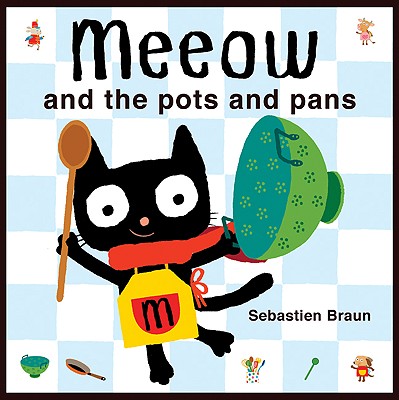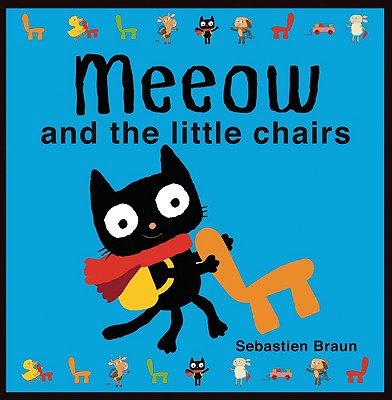That blog focuses more on the activities the 4-year-old is doing, so I wanted to talk a bit about how I've done similar things with my nearly 17-month-old since she turned one (i.e. how to scale down these types of literacy play for the very young toddler). Also, I'd like to talk a bit about running "storytime theater" classes with two age groups: 15 months-3 years and 3-5 years. But that will be another post.
Let's begin with my daughter. I've talked before about reading to her beginning when she was a newborn. I've talked a bit about how to extend the text by asking questions, talking about the pictures and pointing out little things on the page, or making comments. But how do you get your young, possibly nonverbal, toddler in on the act? How do you get her to play with books and story?
When my daughter was just over 12 months, I was working on a monster storytime for one of my sideline jobs. A librarian friend offered to loan me her Big Green Monster puppet, pictured below:
It goes along with Ed Emberley's book, Go Away Big Green Monster. The book is made up of die-cut pages, which slowly reveal the monster's full facial features, then has the reader make them "go away" one by one until the monster disappears. (With the excellent last page, which is just text on a black page: "And don't come back! Until I say so.") The puppet has all the same facial features with velcro on them, so that you can put them on and remove them repeatedly.
Well, my little Picasso immediately latched on to both the book and the puppet. At first she was content to help me act out the story as written, but soon she was making her own crazy monster creations. (It reminded me a bit of the Anything Muppets by Jim Henson.) We had to order our own puppet (and several copies of the book, because hoo boy it is easily tearable! I wish there was a board book version...), and soon little squiggly ears and scraggly purple hair were an everyday fact of life. We had to tell people that if she ran up to them and said "Go-way" it didn't mean that she didn't like them, she just wanted to play monster! (Or read the book in her own very non-linear fashion.)
So, I would guess that was where things really began for our daughter. Taking the story off of the page, but still having it tied to the book in her mind. Obviously at 12 or 13 months, pretend play is only kind of on the table, and it is all still very concrete. This puppet looks exactly like the illustrations. But you can mix up how it plays out and it doesn't have to be exactly the same each time.
Skip ahead to 14 or 15 months, and we have the introduction of Sebastian Braun's "Meeow" books - ultimate favorites around here. The explicit point of these books is how to use objects in unexpected ways to play pretend. These came into our house, once again, as a library find when I was prepping a storytime for 2- and 3-year-olds. The first one we brought home was Meeow and the Pots and Pans:
In this one, Meeow and his friends use pots and pans to make a band. It caught my daughter's attention due to the simple text, bold illustrations, a cat as a main character, and the fact that they were banging on pots and pans - something that she can easily relate to. This is an easy one to see how to extend, but we'll return to it later.
When the first book seemed to interest her quite bit, I brought home another one, and this is where it became more interesting. The second Meeow book we brought home was Meeow and the Little Chairs:
In this one, Meeow and his friends line up their chairs and make a train. She was only half paying attention the first time my husband read it to her, and was in fact, wandering around playing. Cat, chairs, that's nice and mildly interesting. But when my husband got to "Ding-ding! Choo-choo! Meeow has made his very own train!", she whirled around, ran over to him and made him read it again. And he tells me she was literally standing there goggle-eyed with her jaw hanging open. Her first twist ending.
Well, after the requisite reading it over and over ten million times for the next few days (with her screaming "kitty train" unintelligibly every time we got to the last page), we decided that we needed to do something to break up all these readings. So we began grabbing her favorite bell when the bell part came up, and waving a juggling scarf as Moo's little green flag. At bathtime, she started lining up her colorful links along the edge of the tub. At first, we couldn't figure out what she was doing, but it had great focus and purpose. Finally, my husband figured it out, and asked her if she was making a train. The look of intense glee when he asked her that was answer enough. She was engaging in her own retelling of the story!
And that's how things go now. A few days ago, she ran to get a wooden spoon to hold while we read the pots and pan books. She giggles when the book asks if they are going to bake a cake. She happily drums on the book with the "kitty band" (which sings "When the Saints Go Marching In" in our house). And once, in a play space where she couldn't figure out the train table, I said to her "Ding-ding! Choo-choo! [Name] has her very own train!", and it clicked.
Engaging in book and story play is a ton of fun as a parent or caregiver. It need not be relegated to older, verbal children capable of real pretend play. Your young toddler may well surprise you in what she can do.
So, go! Play! Be silly. Let me know how it goes.
(I will make a later post about how this plays out in a group setting in the storytime theater classes I teach occasionally.)
-------------------------------------------
This entry is cross-posted here at Dreamwidth.






